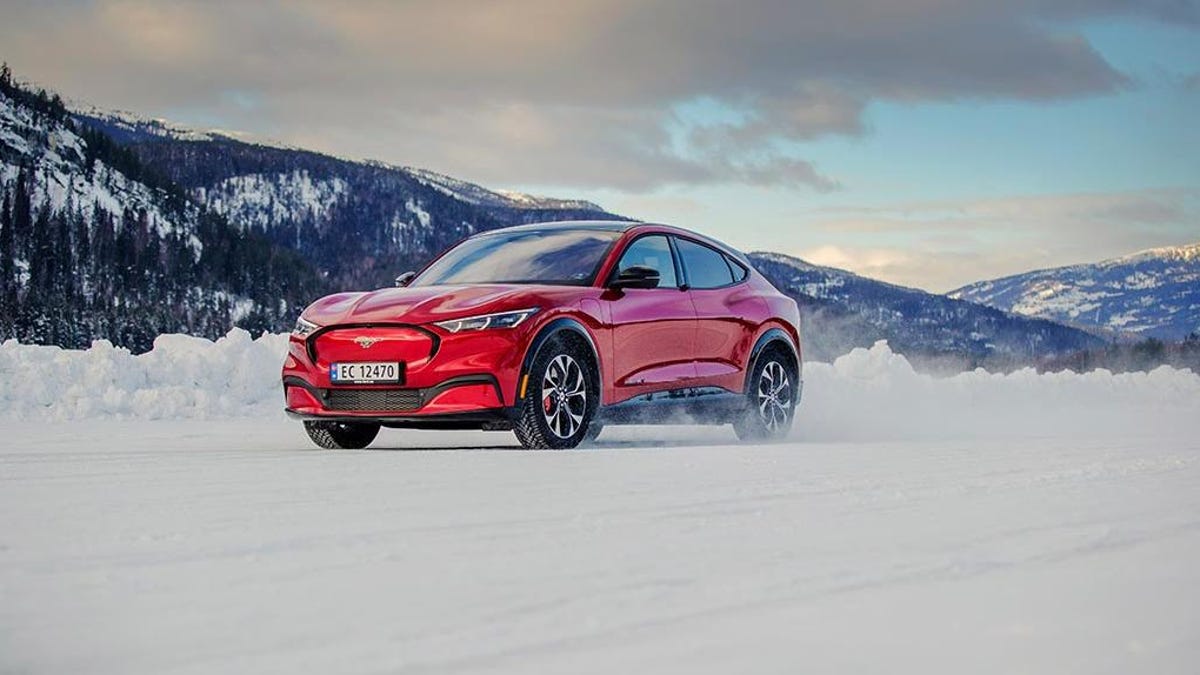Getting Stuck In A Snow Storm In An Electric Car Isn't The Catastrophe It Has Been Made Out To Be: Report

Image: Ford
You may remember back in early January when the east coast went into meltdown as I-95 in Virginia was gridlocked with cars stranded on the highway for as long as 14 hours thanks to a heavy winter storm. It was, understandably, a mess. Since then, thanks to a cynical WaPo oped, anti-EV weirdos have been shouting that this extremely rare occurrence is proof that the world isn’t ready for EVs. This also comes in spite of the fact that there is no evidence that any EVs were left stranded on I-95.
So what’s the reality? Could an EV last 14 hours “idling” in the cold? For one thing, you could ask a couple of people who were actually stuck on I-95 to find out. The whole WaPo oped actually stemmed from a truck driver’s tweet in which a Tesla driver was concerned about his state of charge, and his children. As it turns out, that very same Tesla survived through the storm with 18 percent SoC remaining, and everything was fine.
Another Model 3 driver, a former EPA higher-up Dan Kanninen, wrote that he was grateful to have been in an EV while stuck in the storm.
Kanninen continued, “When the traffic nightmare finally ended, gas-powered vehicle drivers scrambled to wait in long lines at snowed-in and overwhelmed gas stations, but my EV’s navigation system directed me to a nearby open charger; these charging stations were conveniently installed every ten miles along the traffic corridor. Despite the extreme conditions my EV endured that day, I nevertheless made it to the charger with a fifty-mile range surplus.”
If you weren’t convinced by any of that, a writer at InsideHook decided to do some quasi-scientific research of his own. He borrowed a Mustang Mach E from Ford to simulate the effect of 12 hours of “idling” an electric car in the freezing cold. He drove a simulated commute, including a stop off for Starbucks, before heading back home and parking in the driveway with the heat on for 12 hours.
To keep it as realistic as possible to the I-95 situation, writer Alex Lauer did the following:
I did use the heated seats and steering wheel, but I also tried to keep the cabin warm enough that even backseat passengers would be comfortable, so I played around with using only the footwell heating as well as the full-on blast from the footwell and dashboard vents, toggling between 70 and 75 degrees. Beyond the heat, I tried to replicate the in-traffic experience as much as possible, driving around the block a few times over the half day to simulate spurts of moving traffic, using the lights and radio at certain intervals, and even turning the car off for periods of 15-30 minutes a handful of times to conserve energy.
Even with all of the energy-intensive heat running in severe cold, the car performed much better than even I, an EV owner and accused apologist, would have expected. With temperatures as low as 13 degrees, the Mach E finished its 12 hours with 75 percent state of charge remaining! It used just 50 miles of range to sit and idle all day. I would be willing to bet that idling a gasoline car for 12 hours would use far more than 50 miles worth of high test from the tank.
Obviously some earlier electric vehicles like my own 2010 Nissan Leaf would not have fared nearly as well, what with my 50-ish miles of range on a full charge, and hugely inefficient electric heat. But, that just shows how far electric vehicles have come in the last decade, and how things will only continue to get better as the cars improve, become more efficient, and charging infrastructure grows.
So what would have happened if the I-95 snow storm had been populated entirely by electric vehicles? Probably not much would have changed, but a whole lot fewer tons of carbon dioxide would have been emitted.







